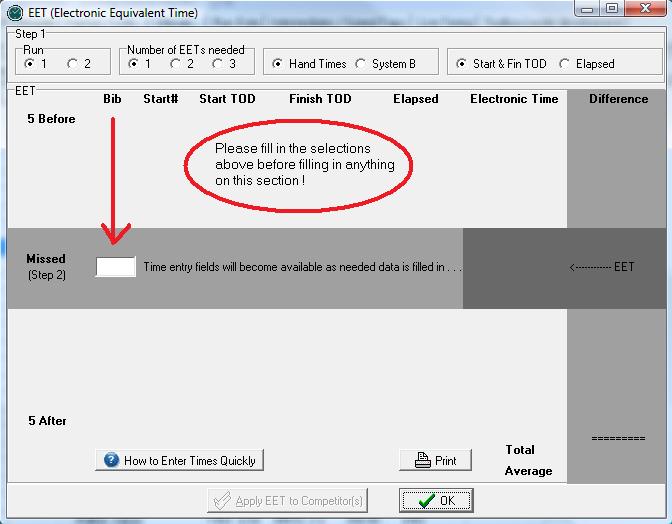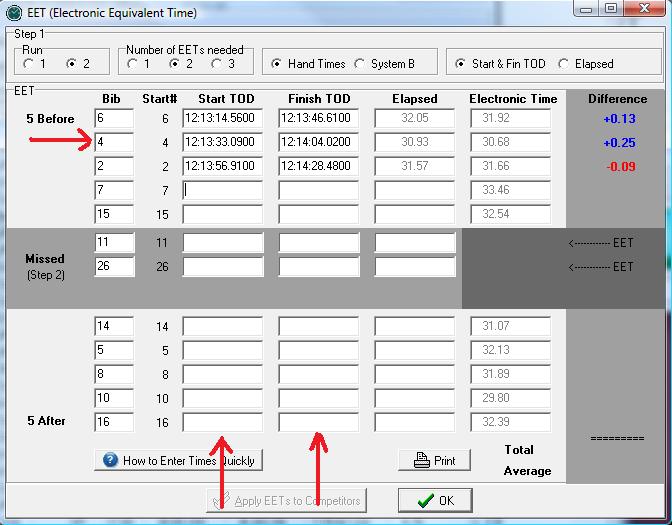National FIS Software : Competitors Other EET: Difference between revisions
No edit summary |
No edit summary |
||
| Line 33: | Line 33: | ||
A report may be generated at any time showing the data on the screen. | A report may be generated at any time showing the data on the screen. | ||
For help with entering times quickly, look at the information via the ''How to Enter Times Quickly'''''' button. | For help with entering times quickly, look at the information via the ''How to Enter Times Quickly''''' '''button'''. | ||
Revision as of 17:25, 2 January 2010
EET (Electronic Equivalent Time)
This is one of the tools in the Other Options menu.
If an electronic time is missed for one or more competitors, this tool helps calculate an equivalent electronic time (EET) from backup or hand times. For this explanation, only hand times will be referred to, but could apply to backup electronic times just the same.
Basically, an EET is calculated by working out an average difference between other electronic times that have been recorded and the hand times, and applying that difference to the hand time(s) for the missing competitor(s).
The software can be used to calculate and store up to ten EET calculations; each of which can calculate up to three equivalent times. To calculate an EET for more than one person at a time, the missed competitors should have run in order because the calculation is based on the five competitors before and after the missing ones.
The backup electronic times and hand times are stored with the competitor. In addition to entering them via this process, they may be entered in the TOD Edit screen and may also be imported.
The EET screen leads you through the process. It's important to fill out the top section first. As more fields are filled in, the remaining fields will be available to fill in. This is because the screen behaves differently, depending on the choices made at the top.
Once the top section is filled in, the bib number(s) for the missing competitor(s) should be filled in. At any point after the missing bibs have been filled in, the screen will be saved, if exited.
This is how the screen first appears:

Below is an example of the form half-filled in. It's calculating for 2nd run result for two missed results (bibs 11 & 26). The bibs for the five competitors with times who ran before and the five after are filled in (left); then the data for missing these competitors may be filled in. In this example, hand times are being entered with time of day (TOD) information.
As the data is entered, you'll see the EET calculation performing the steps to calculate an average difference to apply to the missed competitors.

Once the form is completely filled in, the EETs will be displayed in the dark section (middle right). If everything is correct, click on the Apply EETs to Competitors button to actually use the calculated EETs.
A report may be generated at any time showing the data on the screen.
For help with entering times quickly, look at the information via the How to Enter Times Quickly button.